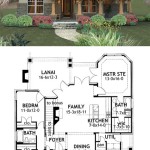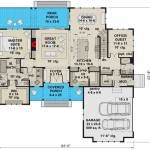Log home house plans are detailed blueprints that provide the instructions and specifications for constructing a log home. These plans typically include sections for the foundation, walls, roof, windows, doors, and any other necessary details. Log homes are known for their rustic charm, energy efficiency, and durability, making them a popular choice for both primary residences and vacation homes.
Creating a log home house plan is a complex process that requires careful planning and attention to detail. The plans must take into account the specific requirements of the building site, as well as the desired size, shape, and style of the home. Log homes can be customized to meet the specific needs and preferences of the homeowner, making them a versatile and attractive option for those seeking a unique and timeless home.
In this article, we will explore the essential elements of log home house plans and provide tips and resources for creating a plan that meets your specific needs. We will also discuss the benefits of log homes and provide examples of popular log home designs.
Log home house plans are essential for constructing a log home that is safe, durable, and aesthetically pleasing. Here are 9 important points to consider when creating a log home house plan:
- Foundation design
- Log size and species
- Roof design and pitch
- Window and door placement
- Interior layout
- Energy efficiency
- Customization options
- Building codes and permits
- Cost and budget
By carefully considering these factors, you can create a log home house plan that meets your specific needs and desires.
Foundation design
The foundation of a log home is critical to its structural integrity and longevity. Log homes are typically built on a concrete or stone foundation, which provides a solid base for the heavy log walls. The foundation must be designed to withstand the weight of the logs, as well as any additional loads, such as snow, wind, and seismic activity.
- Type of foundation: The type of foundation that is best for a log home will depend on the soil conditions and the climate in the area where the home is being built. Slab-on-grade foundations are common in warm climates with stable soil conditions, while crawl space or basement foundations are better suited for colder climates or areas with poor soil conditions.
- Depth of foundation: The depth of the foundation will also depend on the soil conditions and the climate. In areas with cold winters, the foundation must be deep enough to extend below the frost line to prevent damage from frost heave.
- Drainage: Proper drainage is essential for preventing water damage to the foundation and the logs. The foundation should be sloped away from the house to direct water away from the structure. Gutters and downspouts should also be installed to collect and redirect rainwater.
- Footings: The footings of the foundation are theextensions that spread the weight of the house over a larger area of soil. Footings should be made of concrete or stone and should be wide enough to provide adequate support for the logs.
By carefully considering the foundation design, you can ensure that your log home is built on a solid and stable base.
Log size and species
The size and species of the logs used in a log home are important factors to consider when creating a log home house plan. The size of the logs will affect the overall appearance and feel of the home, as well as its structural integrity. The species of the logs will affect the durability, rot resistance, and cost of the home.
Log size
The size of the logs used in a log home is typically measured by their diameter and length. The diameter of the logs will affect the thickness of the walls, as well as the overall weight of the home. The length of the logs will affect the length of the walls, as well as the number of logs that are required to build the home.
Log species
The species of the logs used in a log home will affect the durability, rot resistance, and cost of the home. Some of the most popular log species include:
- Pine: Pine is a softwood that is known for its affordability and ease of workability. Pine logs are relatively lightweight and easy to handle, making them a good choice for do-it-yourselfers.
- Cedar: Cedar is a softwood that is known for its natural rot resistance and durability. Cedar logs are more expensive than pine logs, but they require less maintenance and can last longer.
- Oak: Oak is a hardwood that is known for its strength and durability. Oak logs are more expensive than pine or cedar logs, but they can last for centuries with proper care.
By carefully considering the log size and species, you can create a log home that meets your specific needs and desires.
Roof design and pitch
The roof design and pitch are important factors to consider when creating a log home house plan. The roof design will affect the overall appearance of the home, as well as its structural integrity. The roof pitch will affect the amount of snow and rain that can accumulate on the roof, as well as the amount of sunlight that can enter the home.
- Roof design
The roof design of a log home can be either gable, hip, or gambrel. Gable roofs are the most common type of roof, and they are characterized by two sloping sides that meet at a ridge in the center of the roof. Hip roofs are characterized by four sloping sides that meet at a point at the top of the roof. Gambrel roofs are characterized by two sloping sides that meet at a ridge in the center of the roof, and then two additional sloping sides that meet at a lower ridge on each side of the roof. - Roof pitch
The roof pitch is the angle of the roof slope. The roof pitch is typically measured in degrees, and it can range from 10 degrees to 60 degrees. A steeper roof pitch will allow for more snow and rain to run off the roof, but it will also require more materials to build. A shallower roof pitch will allow for less snow and rain to run off the roof, but it will also require fewer materials to build.
By carefully considering the roof design and pitch, you can create a log home that meets your specific needs and desires.
Window and door placement
The placement of windows and doors in a log home is important for both aesthetic and functional reasons. Windows and doors can be used to create a variety of different looks, from rustic to modern. They can also be used to control the amount of light and ventilation in a home.
- Natural light
Windows and doors allow natural light to enter a home, which can help to reduce the need for artificial lighting. Natural light can also help to improve mood and productivity. - Ventilation
Windows and doors can be used to ventilate a home, which can help to improve air quality and reduce the risk of moisture problems. Ventilation can also help to regulate the temperature in a home. - Views
Windows and doors can provide views of the outdoors, which can help to create a more relaxing and enjoyable living environment. Views can also help to increase the value of a home. - Security
Windows and doors should be placed in a way that maximizes security. Windows and doors should be located in areas where they are less likely to be broken into, and they should be equipped with locks and other security features.
By carefully considering the placement of windows and doors, you can create a log home that is both beautiful and functional.
Interior layout
The interior layout of a log home is important for both aesthetic and functional reasons. The layout should be designed to maximize space and flow, and to create a comfortable and inviting living environment.
Open floor plans
Open floor plans are becoming increasingly popular in log homes. Open floor plans create a more spacious and airy feeling, and they allow for more natural light to enter the home. Open floor plans are also more flexible, as they can be easily reconfigured to meet changing needs.
Traditional floor plans
Traditional floor plans are also popular in log homes. Traditional floor plans typically have a more formal layout, with separate rooms for different functions. Traditional floor plans can be more efficient in terms of space utilization, and they can provide more privacy.
Log cabin layouts
Log cabin layouts are a type of traditional floor plan that is specifically designed for log homes. Log cabin layouts typically have a central living area with a loft above. The loft can be used for sleeping, storage, or other purposes.
Custom floor plans
Custom floor plans are also an option for log homes. Custom floor plans allow you to create a home that is perfectly suited to your specific needs and desires. Custom floor plans can be more expensive than standard floor plans, but they can also be more rewarding.
No matter what type of interior layout you choose, it is important to carefully consider the flow of traffic and the placement of furniture. You should also make sure that the layout takes advantage of the natural light and views.
Energy efficiency
Log homes are naturally energy efficient due to the insulating properties of wood. However, there are a number of additional factors that can be considered when creating a log home house plan to further improve energy efficiency.
- Insulation
Insulation is one of the most important factors to consider when designing an energy-efficient log home. Insulation can be used to fill the gaps between the logs, as well as to insulate the roof, walls, and floor. There are a variety of different types of insulation available, so it is important to choose one that is appropriate for the climate and the type of log home being built. - Windows and doors
Windows and doors are another important factor to consider when designing an energy-efficient log home. Windows and doors should be energy-efficient, and they should be installed properly to minimize air leakage. - Air sealing
Air sealing is the process of sealing any gaps or cracks in the log home envelope. Air sealing can help to prevent warm air from escaping in the winter and cool air from escaping in the summer. There are a variety of different air sealing materials available, so it is important to choose one that is appropriate for the climate and the type of log home being built. - Heating and cooling systems
The heating and cooling system is another important factor to consider when designing an energy-efficient log home. The heating and cooling system should be sized appropriately for the size of the home and the climate. There are a variety of different heating and cooling systems available, so it is important to choose one that is appropriate for the climate and the type of log home being built.
By carefully considering these factors, you can create a log home house plan that is energy efficient and comfortable to live in.
Customization options
Log homes are highly customizable, which is one of the reasons they are so popular. Log home house plans can be modified to meet the specific needs and desires of the homeowner, including the size, shape, style, and finish of the home.
Size and shape
Log homes can be built in a variety of sizes and shapes. The size of the home will depend on the number of bedrooms and bathrooms needed, as well as the desired living space. The shape of the home can be simple or complex, and it can be customized to fit the contours of the building site.
Style
Log homes can be built in a variety of styles, from rustic to modern. The style of the home will depend on the personal preferences of the homeowner. Rustic log homes typically feature exposed logs and a natural finish. Modern log homes may incorporate more contemporary elements, such as large windows and open floor plans.
Finish
Log homes can be finished in a variety of ways. The finish of the home will depend on the desired look and feel. Log homes can be left with a natural finish, or they can be stained or painted. The logs can also be sanded or chinked to create a more finished look.
In addition to these basic customization options, there are a number of other ways to customize a log home house plan. For example, homeowners can choose to add decks, porches, or garages. They can also choose to add custom features, such as a wine cellar or a home theater.
By working with a qualified log home builder, homeowners can create a log home that is perfectly suited to their specific needs and desires.
Building codes and permits
Building codes and permits are an important part of the log home planning process. Building codes are regulations that govern the construction of buildings, and they are in place to ensure that buildings are safe and habitable. Permits are required to ensure that the construction of a log home complies with the building codes.
- Building code requirements
Building codes typically include requirements for the following:
- Foundation design
- Log size and species
- Roof design and pitch
- Window and door placement
- Interior layout
- Energy efficiency
- Structural integrity
- Fire safety
Building codes may vary from state to state, so it is important to check with the local building department to determine the specific requirements for log home construction.
- Obtaining a building permit
A building permit is required before construction can begin on a log home. The building permit application process typically involves submitting the log home house plans to the local building department for review. The building department will review the plans to ensure that they comply with the building codes. Once the plans have been approved, the building department will issue a building permit. - Inspections
Building inspectors will typically conduct inspections during the construction process to ensure that the log home is being built in accordance with the building codes. The inspections will typically include the following:
- Foundation inspection
- Framing inspection
- Electrical inspection
- Plumbing inspection
- Final inspection
- Certificate of occupancy
Once the log home is complete, a certificate of occupancy must be obtained from the local building department. The certificate of occupancy verifies that the log home has been built in accordance with the building codes and that it is safe and habitable.
By following the building codes and obtaining the necessary permits, you can ensure that your log home is safe and habitable.
Cost and budget
The cost of building a log home can vary depending on a number of factors, including the size and complexity of the home, the type of logs used, and the location of the build. However, as a general rule of thumb, log homes cost more to build than traditional stick-built homes. This is due to the fact that logs are more expensive than traditional building materials, and log home construction requires specialized skills and knowledge.
The cost of a log home house plan will typically range from $5,000 to $15,000. The cost of the plan will depend on the size and complexity of the home, as well as the level of detail included in the plan. Some plans may only include the basic layout of the home, while others may include detailed construction drawings and specifications.
In addition to the cost of the house plan, there are a number of other costs that must be considered when budgeting for a log home. These costs include the cost of the logs, the cost of construction, and the cost of land. The cost of the logs will depend on the type of wood used and the size of the logs. The cost of construction will depend on the size and complexity of the home, as well as the location of the build. The cost of land will depend on the location and size of the lot.
Overall, the cost of building a log home can be significant. However, log homes are a unique and beautiful type of home that can provide years of enjoyment. By carefully planning and budgeting, you can build a log home that meets your needs and desires.










Related Posts








